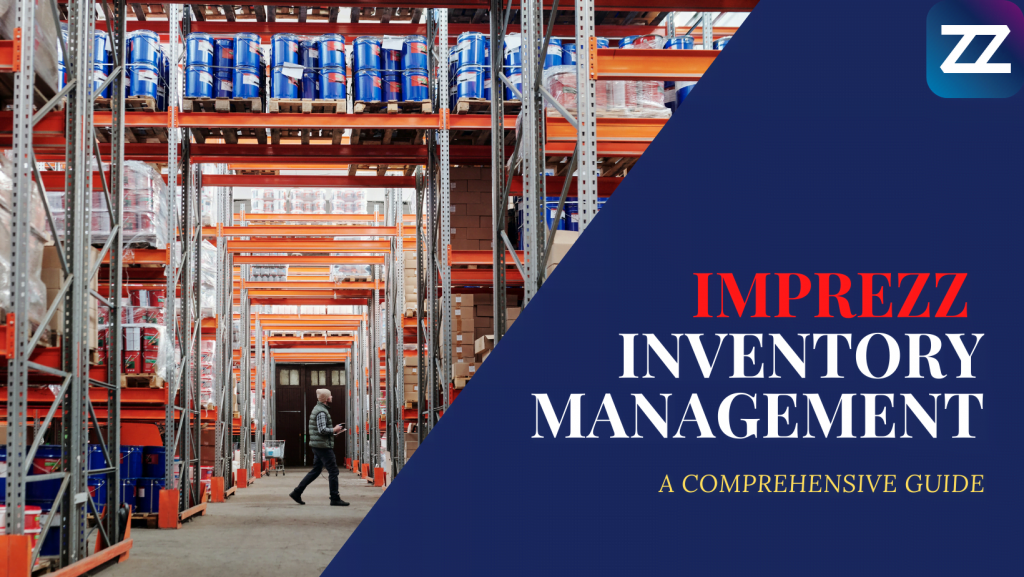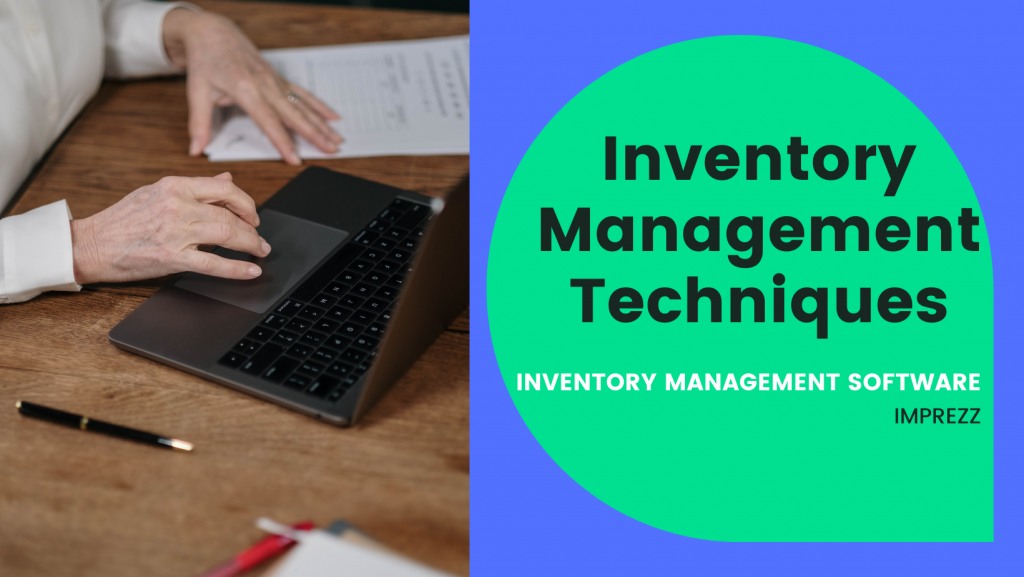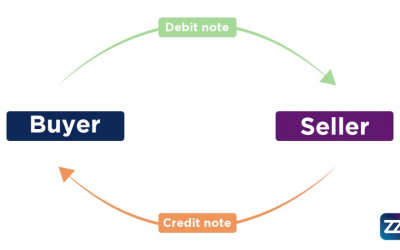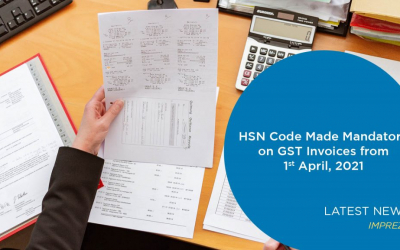
Inventory management is the heart of a growing industry. With its complexity, it becomes tough for those who are starting. This comprehensive guide to inventory management will cover each and every aspect of it, the best techniques you need to follow, the best practices, the ideal software, and much more. It also covers how Imprezz can help you follow all the following techniques to scale up your business. So sit tight, and learn from the most comprehensive and detailed blog on Inventory Management.
WHAT IS INVENTORY MANAGEMENT?
Inventory management refers to the planned and systematic method of ordering, storing, and selling a company’s inventory. This includes the management of raw materials as well as finished goods, not to mention proper warehouse management, to avoid inventory from becoming dead stock. To get familiar with these terms, read: Inventory Management: Basic Terms And Their Application
For companies having complex supply chains and manufacturing processes, inventory management becomes quite daunting. This calls for the use of advanced software like that of Imprezz, which help automate several repetitive manual tasks, saving time and effort to focus on the more critical aspects of growing the business.
WHAT IS INVENTORY CONTROL?
Inventory control revolves around the idea “How much stock should I order?”. It is the process of keeping the right amount of inventory or stocks to avoid shortages, overstock, manage potential deadstock, and other problems leading to drastic losses.
Inventory control focuses on cutting down slow-selling items and increasing the more popular ones. Its sole purpose is maximising profit with the minimum investment in inventory. In short, inventory control is based on Warehouse management. This includes:
- Barcode Scanner/ augmented reality: Enterprise-grade barcode scanning text recognition (OCR) and augmented reality (AR) are used and easily deployed to manage Inventory Control or improvise Warehouse Management. All processing happens on the device, thereby increasing speed along with data security.
- Reorder Point reports: The reorder point is a planning method based on previous orders where no bill of material exists. This method is helpful to manage independent demand items.
- Consolidation of sources: Inventory control is helpful to track the location of suppliers, manage and analyse their history and consolidate sources to avoid discrepancies. This is included in inventory management, too, and the same function can be performed by advanced inventory management software.
- Comprehensive Inventory Counting: Inventory counting plays a vital role in identifying minute details in specific parts of the supply chain. This is achieved through various rounds of Inventory counting, and a detailed record is kept, automated using advanced software like Imprezz. A serious and responsible manager is appointed to supervise the counting since lethargy in this step incurs heavy loss for the firm.
- Syncing sales order with a purchase order: This can be achieved only through a centralised communication system, where each entry is synced with all the levels of the business. Imprezz inventory management software is an excellent choice over simple spreadsheets, as it provides a precise mapping of the supply chain with a comprehensive overview of each purchase order, allowing smooth integration with the sales order.
WHAT IS THE DIFFERENCE BETWEEN INVENTORY MANAGEMENT AND INVENTORY CONTROL?
While inventory management has a much broader scope, inventory control is the subset of inventory management. Inventory management is the management of the entire supply chain all the way from raw materials to the finished goods. On the other hand, Inventory Control is based on Warehouse Management, the amount of stock available, optimising the stock quantity for increased yield, etc.
Which comes first? Inventory Management or Inventory Control?
Thankfully, unlike the chicken-egg dilemma, there is a clear answer to this. Inventory Control comes first, followed by Inventory Management.
Since Inventory Control deals solely with raw materials, there is no doubt it must be optimised first to smoothen the subsequent processes. The stocks present in the warehouse must be carefully analysed based on demand, segregated, and then proceeded further in the supply chain. We shall discuss more about inventory management techniques later.
After the optimisation of the inventory in the warehouse, the use of advanced software facilitates clarity and provides a birds-eye view of the entire functioning of the supply chain. The systematic mapping and making a detailed chart of each step of the supply chain ensures none of the common mistakes of inventory management, such as inventory getting lost, never takes place. Hence the correct order optimises the raw material through inventory control, maintaining clarity through inventory levels, and selling the product using efficient inventory management techniques.
WHAT MAKES INVENTORY MANAGEMENT AN INDISPENSABLE PART OF A BUSINESS?
The following points emphasise the importance of Inventory Management:
- Winning the heart of customers through exemplary service and satisfaction is what really matters in growing a business. This can be achieved through a smooth supply chain, where each inventory is accounted for.
- In a business with a complex supply chain, inventory can easily be misplaced or left unaccounted for. This causes disruption in the entire supply chain since it is a continuous process. Hence proper strategy with clear visibility on each and every inventory is required.
- The inventory bought use up most of a firm’s working capital, and any tiny error causes a drastic loss to the total cost of a firm. To curb this issue, special care must be taken to keep track of each and every item through exemplary Warehouse Management and analytics tools so that they don’t turn up to be dead or ageing stocks.
These three points sum up the extreme importance of inventory management in a business. To improve customer satisfaction, have a systematic and smooth supply chain, and curb drastic loss due to common mistakes of over or understocking, use advanced software like that of Imprezz, which automates these tasks, and you need not worry about losing track of any of the inventory. To get a detailed analysis, read: Inventory Management 101: Small Business Guide
WHAT ARE THE INVENTORY MANAGEMENT TECHNIQUES?

There are predefined techniques in Inventory Management System curated by experts to optimise Inventory Management to its core. Let us discuss all these techniques one-by-one comprehensively, yet the choice of technique is left upto you. Every approach fulfils a specific requirement, and some contradict one another, and you have to select the one that best suits your needs.
- Economic Order Quantity (EOQ): Economic order quantity or EOQ is the technique based on buying the ideal quantity of inventory required analysing various factors such as total costs of production, demand-supply ratio, customer interests, and others. Its primary objective is to solely minimise the investment by freeing the tied-up cash for most firms.
- Minimum Order Quantity: This is the minimum amount of stock that a supplier is actually willing to sell. The retailers are bound to order/purchase this least amount of stock in order for the supplier to sell it to you.
- ABC Analysis: This technique makes use of setting priority for type of inventory having maximum profits, hence are categorised as A. The ones yielding the least profit are labelled C. This method is useful to prevent a stock from becoming an ageing stock or a dying stock.
- Just-In-Time Inventory Management: This method analyses the stock needed and get it as they need. The stock is not stored but purchased as and when needed, reducing the cost of storage or maintaining a proper functioning warehouse facility. This is extremely useful because then the advanced software totally used up for Warehouse Management can now be utilised for other analytical tools to maintain the proper functioning of the supply chain.
- Safety Stock Inventory: This method makes use of ordering extra stock, much more than the predicted demand. This prevents inventory from becoming understocked due to incorrect and faulty forecasting.
- FIFO and LIFO: First In First Out is the method of selling the oldest inventory first, hence preventing stock from becoming deadstock. Last In First Out is the method of selling the newest item first, hence preventing stock from becoming ageing stock.
- Reorder Point Technique: This technique makes use of a firm’s own cycle to predict the amount of stock to be purchased and is an extended version of the Safety Stock formula. This helps significantly lower lead time.
- Perpetual Inventory Management: This includes physically and manually counting the inventory as and when it arrives and can be performed without the use of heavy advanced software. The simple use of spreadsheets along with pen and paper is enough for this method, though no guarantee of this method’s effectiveness in large businesses.
- Dropshipping: This Inventory management technique involves not having any physical interaction with the stock but instead acts as a medium between the buying and selling between the customer and a third party. This is done by not physically storing the goods in the firm’s own warehouse but instead making the third party directly delivering the finished goods to the customer directly. This significantly saves the company lots of money not spending on advanced software for Warehouse Management.
- Demand Forecasting: This has become a very common inventory management technique nowadays among retailers. It uses analytics tools like Imprezz to calculate and predict the future customer demands and order supply according to that. It totally relies on forecasting and can be clubbed with safety stock inventory management technique to increase effectiveness.
Read the blog to know these techniques in detail: INVENTORY MANAGEMENT: BEST PRACTICES AND PROCESS
WHAT ARE SOME NEW TECHNIQUES DEVISED FOR THE SUDDEN PANDEMIC?
The sudden pandemic of Covid-19 has disrupted most businesses that were not digital and had a physical presence in the marketplace. The time has come to devise and follow certain special techniques to cope up with the changing market and gain an edge over our competitors.
- Pay Attention To Customer Demands: The pandemic has led to the growth of e-commerce and has led to significantly high returns in the market. The specificity of orders has drastically increased, and customers know exactly what they wish to order. This type of fluctuating demands of customers can only be managed through closely monitoring customer demands and stocking supplies according to the point of sale.
- Focus On Data-Driven Processes: The fluctuating demands of customers have led to higher returns of stock that have been purchased, which get stored in the warehouse and subsequently develop into dead or ageing stocks. This can be prevented by following a data-driven approach. Analysing each and every inventory returned can help in ordering EOQ or following other efficient techniques like JIT for exemplary Warehouse Management.
- Consolidating Suppliers: If you observe carefully, the firms which have been worst hit are the ones who were completely dependent on Chinese Manufacturers, and after the ban, they suffered a drastic loss of working capital, hence jeopardising their business. To avoid this sort of scenario, advanced business analytics tools like that of Imprezz must be used to check the reliability of suppliers, their history and to diversify our reach. This helps curb the reliability of the entire business on a particular supplier.
- Plan Ahead: The most underrated technique, businesses that had a backup plan are the ones who are leading the market now. Planning ahead for unforeseen circumstances is the most crucial aspect of a business. This helps us have peace of mind, combined with a backup plan for such circumstances. This involves storing our database as cloud data, implementing advanced software of AI and IIOT for inventory tracking, and digitalising our business to never get affected due to calamities.
A COMPLETE ROADMAP TO IMPREZZ INVENTORY MANAGEMENT

Step-1: Review the current Inventory Management Processes
Schedule and plan a designated time to review the materials available, evaluating the product numbers, descriptions, quality, etc. Also, assess the type of software being used and if it’s up to date.
Step-2: Strategize and Organize
In order to streamline the supply chain, organising the crib or warehouse plays utmost importance. Imprezz inventory management software follows certain steps. They include:
- Categorising and grouping inventory based on priority
- Establishing optimum levels for each product
- Devising perfect planning using charts and analytical tools to check inventory cost
- Cleaning, furnishing and making the warehouse more organised
- Removing the dead and ageing stocks
- Establishing a centralised communication system
Step-3: System Setup
After the organisation and planning, and all the needs assessed Imprezz product sales representative would facilitate the complete setup of the Imprezz Inventory Management Dashboard. This step will include:
- Loading the product with the correct descriptions and credentials
- Creating specifics about each product’s storage in the warehouse
- Setting up and verifying the purchase orders
- Placing the initial stocking descriptions and assisting in the management
- Delivering products to the different stocking levels at the crib/warehouse digital platform
Step-4: Execute and Launch
With all the steps complete, the Imprezz experts will help you go live, consolidate suppliers, and execute all the inventory management techniques discussed above. The final step includes:
- Setting up and going live with vendors
- Ordering or purchasing the inventory through Imprezz analytics
- Following the JIT and EOQ methods to execute inventory optimisation
- Setting up real-time tracking for the most effective Warehouse Management.
AN EXPERT SUMMARY
Amid the sudden pandemic of Covid-19, businesses that could adapt to the digitalisation of companies and use advanced software in an informed and intelligent manner are the ones who flourished. Digitalisation has led to an even playing field. The difference in gaining an edge over the competitors lies in how well a business uses the different technologies. Read: What is the best free inventory management software?
Imprezz Inventory Management is the best tool to manage inventory because of the vast and extensive features it offers and the fact that the simple and user-friendly interface is straightforward for businesses to get used to. Sign up now to try out Imprezz with its 14 days free trial. Let the experts help you grow your business and scale up to new heights.


